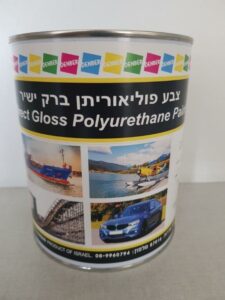Do it yourself DIY car painting – all the secrets
Do-it-yourself DIY car painting – all the professional secrets
How to paint your car with your own hands
The vehicle, which by its nature is outside and exposed to unusual weather conditions, scratches, accidents, wear and tear due to obsolescence, needs repair and painting. Many people want with all their heart to paint the car themselves for a number of reasons: saving money, the love for the car, the desire to do manual work. DIY hobby.



Do-it-yourself DIY car painting – all the professional secrets
How to paint your car with your own hands
What do you need to paint a car ?
Suitable place: closed and as clean as possible from all directions, to prevent dust from landing on the fresh paint. Openings that can be opened and closed and a large fan can be placed to blow the paint fumes from the direction of painting and out.
Personal equipment: a suitable breathing mask for the face with filters for clean breathing. Disposable protective clothing for the body and head. disposable gloves.
Compressor spray equipment and paint gun can be rented for one day.
Compressor: compressor with dryer to receive dry air, prevent water from reaching our paint during spraying.
Paint gun : you should purchase a high-quality professional gun, two options: with a bottom cup (so that the suction tube of the paint from the cup, we can attach a filter to prevent paint grains from reaching the spray nozzle) and also an air filter that connects between the air tube and the gun to empty accumulated water in addition to the one at the exit of the compressor To be safe, if moisture arrives with the air despite the filter at the exit from the compressor. A paint gun with an elite cup that is more suitable for painting the roof of the car and also for metallic colors and it is also easier to get a rich fan of paint while spraying so the painting is also easier and faster. But this requires filtering the paint before putting it in the overhead tank. Professional car painters prefer this type of paint gun.
How to paint your car with your own hands
Tinsmith’s materials: tinsmith putty , adhesive paper and wrapping paper that does not transfer color (not newspapers), coarse and fine glass paper, for large areas a polishing machine to which glass papers are attached.
Colors: one-component ” Acryl Car Filler ” or two-component ” Compact Putty ” filler base paint , two-layer ” Acryl Car ” acrylic car paint in the required shade or metallic , one-component acrylic varnish or two-component Danbergloss acrylic direct shine varnish .
Do-it-yourself DIY car painting – all the professional secrets
How to paint your car with your own hands
And the process itself:
- First, we disassemble everything that can be easily disassembled and put back after painting: wipers, sprinklers, plastic protective strips, roof, headlight frames, flashlights, emblems, identification plates, etc. We will have to wrap everything that does not disassemble well so that it does not get dirty with paint. Parts that do not undergo painting must be well wrapped to prevent gases with paint from sticking to them. If general painting is not necessary.
- Polishing the entire vehicle for general painting or local polishing if the painting is partial. Do not polish to the tin, but only remove a layer of the old paint so that all areas to be painted will become deep matte without a drop of shine. If the old paint comes off easily, remove completely to the trash.
- Rust – normal but rusty areas: thorough polishing without reducing the thickness of the tin. Removing the dust, applying ” Degreaser 3000 ” gently removes rust without leaks, with a brush, only on the reds or the rusty area for 30-60 minutes. Rinse with water and dry. Applying a thin layer of ” rust converting epoxy ” paint on the rusted area, can be done with a brush or spray. If we have removed all the paint from the vehicle with polishing or paint remover, spray this rust-converting epoxy primer over the entire vehicle. Suitable for painting all types of bumpers as well.
How to paint your car with your own hands
4. Sheet metal work – damage to the sheet metal must be repaired so that we straighten the sheet metal to its previous position as much as possible. Bodywork is done by pulling the tin out by screwing into it and pulling/hitting until it is as straight as possible. Polishing the area, applying an epoxy base paint that converts rust, and applying layers of “tin putty” and rough and then fine polishing, until alignment and restoration to the original lines of the vehicle.
Thorough cleaning of dust and dirt from the vehicle with air pressure and a damp cloth, wrapping parts that are not painted and the wheels. Cleaning before painting with a clean cloth dipped in ” antisilicone ” to remove any possible grease from the painted parts or the entire vehicle in general painting.
5. First leveling layer: one-component ” Acryl Car Filler ” (thinner 21 or acrylic) or two-component ” compact putty ” (thinner 11 or acrylic). Thin with the appropriate thinner for each of them, spray a layer wet on wet until full and uniform coverage of all the painted areas is obtained. After drying, all the painted areas should be polished and smoothed by hand, gently with Nir Aps (water paper) and soap. Wash well with water and dry. The finish now needs to be perfect before paint. Any remaining defects will show after painting. Therefore, if it is not perfect, another layer and again wet polishing, washing and drying.
How to paint your car with your own hands
6. layers of one-component acrylic paint ” Acryl Car ” smooth or metallic (thinner 21 or acrylic). Or one wet on wet if possible without leaks and full coverage. In general painting, 2 hands are required because the first one is always incomplete.
7. layers of acrylic varnish ” Acryl Car Lacquer ” (diluting acrylic thinner to obtain a high gloss). or 2 layers of two-component direct shine varnish (this is superior in quality to the one-component varnish).
That’s it, It’s over. Adhesive papers can be peeled off, disassembled parts can be put back in place, the vehicle should look like it left the factory “when it was born”.
Do-it-yourself DIY car painting – all the professional secrets
How to paint your car with your own hands
pay attention:
A. Instead of Sections 7,8, for those who are less strict in their demand for a perfect finish, one or two layers of ” Denbergloss direct shine ” (two-component) smooth or metallic , rough or matte, can be painted, instead of 4 layers of acrylic. The result can be just as good and sometimes even better. (depends on the professionalism of the colorist).
B. The painting is done with the appropriate dilution and the appropriate air pressure to obtain a fine, non-dispersing paint fan to prevent “gases” with the paint floating to other places in the vehicle (over-spray) and making the paint rough and not shiny there. You must first practice on different surfaces before starting to paint the vehicle and you must adjust dilution and air pressure to obtain a desired result.
C. Spraying paint must be done from a distance of about 20-25 cm from the vehicle in fan movements from right to left and vice versa. With a pause in pressing at the end of each stroke. It is possible and recommended in the form of an arc downwards. The horizontal parts by tilting the gun at 45 degrees.
D. You must read the specification of each color and learn drying times between layers and final drying.
E. The caution and safety instructions must be observed.

 English
English עברית
עברית Русский
Русский